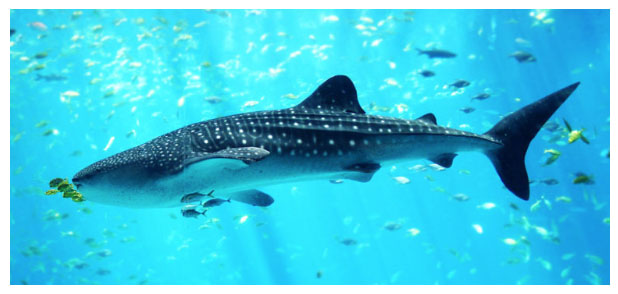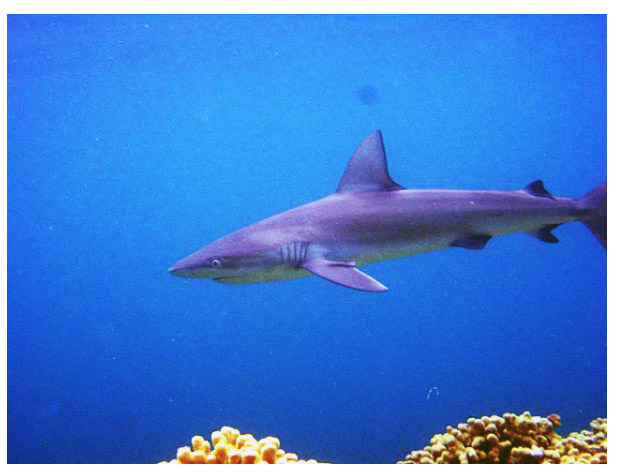Saving Sharks in the Galapagos

The Lindblad Expeditions-National Geographic (LEX-NG) Fund aims to protect the last wild places in the ocean while facilitating conservation, research, education, and community development programs in the places we explore. This blog entry spotlights some of the exciting work our grantees are doing with support from the LEX-NG Fund.
It’s a common scene. You’re at the beach, and it’s a beautiful day. Blue-green waves crash lazily on a sandy shore. It’s hot, and you’re ready to take a dip. Before venturing in the water, however, you pause a moment to scan the horizon. A wave caps. Is that a dorsal fin? you wonder in panic, while a certain familiar two-note soundtrack plays in your head.
You’re not alone in your fear. People are terrified of sharks.
2015 marked the 40th anniversary of our collective shark paranoia (thanks, Jaws). Why are we so afraid though? Is it the decidedly un-cuddly nature of sharks? Their glassy, seemingly unblinking eyes and rows of razor-sharp teeth? Or the way they creep from fathomless depths to prey on innocent swimmers?
It’s certainly not the latter. Do you know how many people on average are killed by sharks each year? Six. Now what about the number of sharks killed by humans? Approximately 100 million.
The disparity between these numbers is mind-boggling: 6 versus 100 million. So who are the ones to be feared? (Hint: not sharks.)

Shark populations are in serious decline all over the world, mostly due to commercial fishing and the high demand for shark fins in the Far East. Given the devastating number of shark deaths each year, the Lindblad Expeditions-National Geographic (LEX-NG) Fund has awarded a grant to the Charles Darwin Foundation to study and conserve sharks in the Galapagos Marine Reserve (GMR).
The GMR is a protected area of 50,000 square miles of ocean surrounding the Galapagos Islands, and is home to nearly 3,000 species of marine creatures including many species of sharks. Fishing has been prohibited in much of the GMR since 2000, but in an area of ocean roughly the size of Louisiana, has the fishing ban been effectively enforced?
Scientists don’t think so. While the Galapagos Marine Reserve is one of the last places on earth where you can find sharks in abundance, users of the GMR have noticed a decline in shark sightings in recent years.
In order to get to the bottom of this problem, the Charles Darwin Foundation (CDF) has embarked on a study to establish a baseline of shark numbers and distribution in the GMR: the first of its kind. Once scientists have a better idea of how many sharks are in the GMR and where they tend to gather, the government of Ecuador can use this information to craft more effective management strategies that will protect shark hotspots from illegal fishing.

How do CDF scientists keep track of sharks in the GMR? Not with a bucket of fish guts and a pair of binoculars; their methods are a bit more high-tech. The CDF captures certain species, such as silky and tiger sharks, tags them with sophisticated tracking equipment, and then releases them back in the GMR. That way scientists can follow their movements via satellite and establish where sharks like to hang out and how far they travel.
To read the entire article: http://voices.nationalgeographic.com/2016/01/06/saving-sharks-in-the-galapagos-one-person-at-a-time/

NORTH SHORE SHARK ADVENTURES
Haleiwa Harbor
66-105 Haleiwa Rd
Haleiwa, HI 96712
Call 808.228.5900
